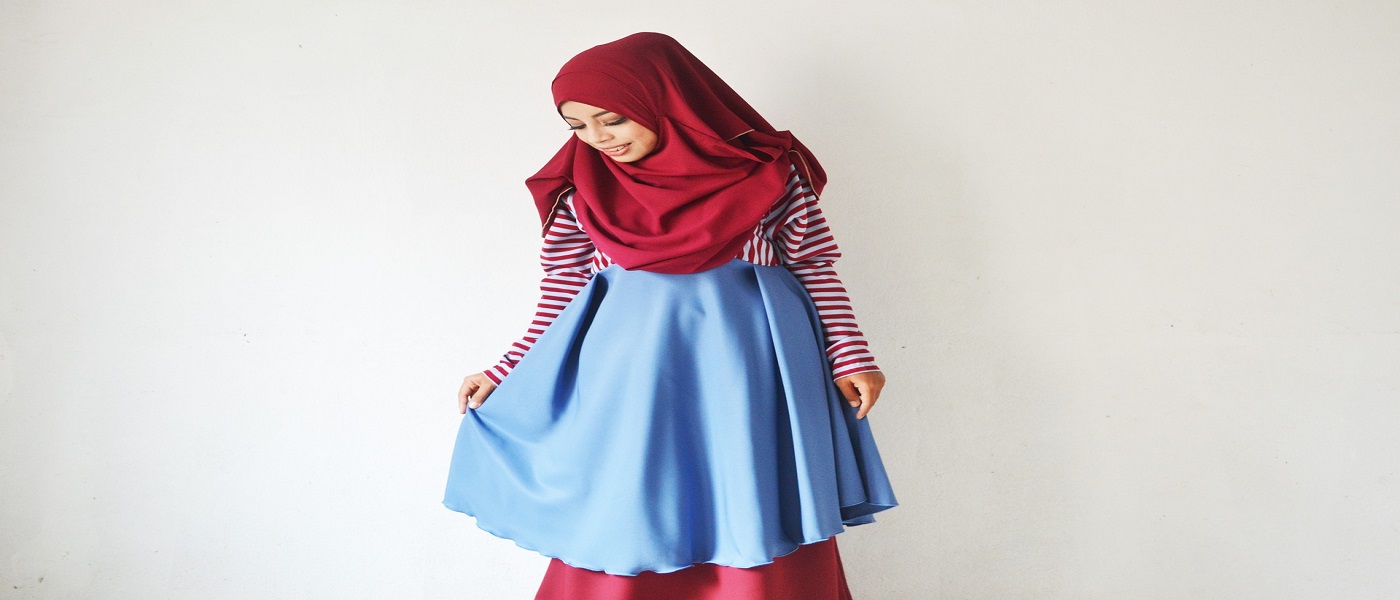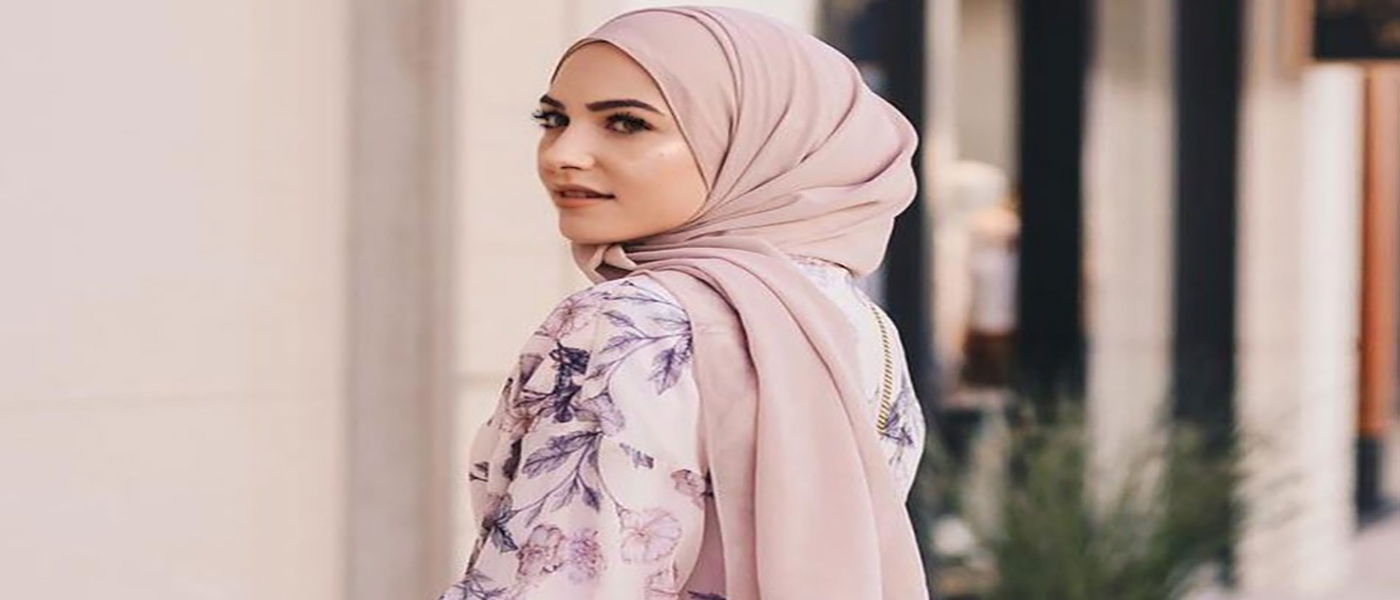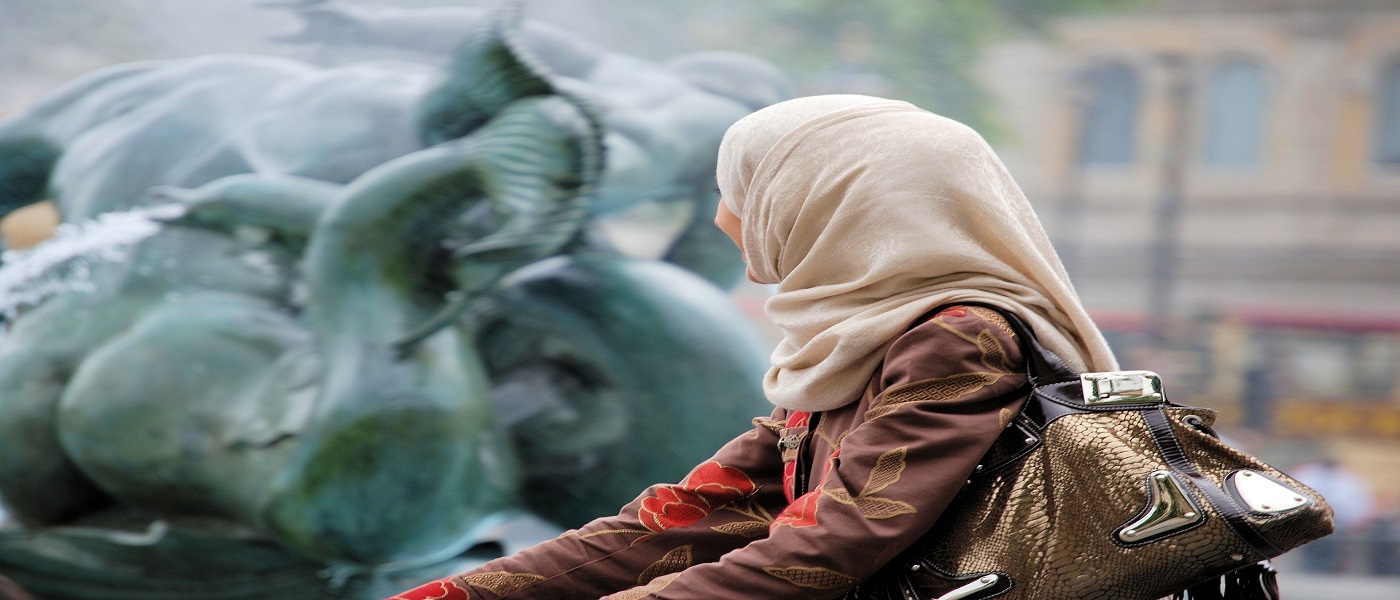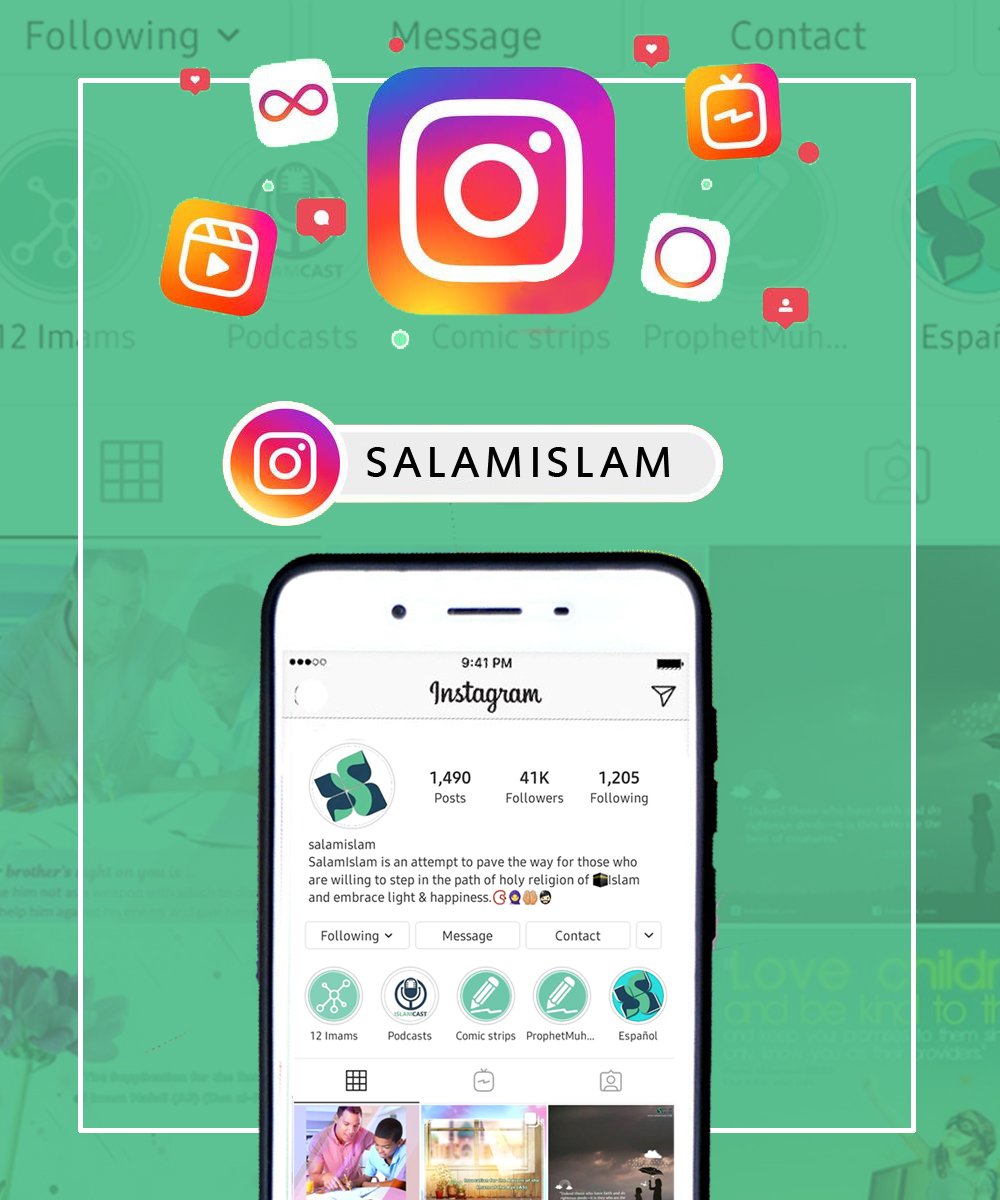

Can Women in Islam Work as Fashion Models?
Well, one way to answer this question is to consider it by itself and regardless of any side issues. One may thus say that Muslim women –together with the rest of the world– need clothes! women in Islam, too, deserve to wear beautiful and stylish outfits! Muslim women, too, can have a job! And if all that is acceptable, there could be no fault found with designing such clothes or presenting them as a model.
As you know, though, Islam generally gives us the liberty to do all that is sensible, necessary, and harmless but always draws our attention to certain limits and red lines as well. Our answer to such questions, therefore, is usually like; “No problem provided that…”
So, let’s now have a look at those conditions for women in Islam that might concern fashion designing and modeling?
1. Cover End
As you know, Islam has set a certain limit on women’s covering. This certain limit addresses women’s natural charm and attractions for men, and their understandable desire to expose them.
So, the big idea for setting such specific measures may be that women do not make a pledge of a special extent of covering for themselves which they would never break. Since, it will end up in what we can see today, where women’s bare body is so widely used as a tool to win men’s attention and pleasure. That’s why Islam has issued special rulings for women (and of course men’s) covering.
2. Modesty for Women in Islam
The second thing, which is even more repeated and stressed on in Islam, is modesty [1]. But what is modesty all about? Cambridge dictionary defines it [with regards to clothes and behavior] as “a quality, in women, of dressing or behaving in a way that is intended to avoid attracting sexual interest” [i].
Of course, modesty is not exclusively for women in Islam. Men, too, are bid not to dress up or behave in a way that may attract sexual interest. What’s more, the same term is also metaphorically used to imply protecting all parts of the body from trespasses, such as modesty of the eyes, modesty of the tongue, or modesty of the heart. So, in a broad sense, modesty is the quality of protecting oneself against wrong desires. And that’s exactly what we need in fashion modeling.
Now, modesty is somehow different from covering obligations. It means a person (or a woman, as concerns this article) might be well covered following the Islamic principles of covering, but her type of clothes or her manners may still leave room for provoking sexual interest.
Moreover, the realization of modesty can be culturally variable. What is considered as an acceptable level of modesty in a cultural background may not be so in another. But in every culture, I guess, women know pretty well what kind of outfit or behavior could attract sexual attention. And that will do!
To Come to an End…
Finally, I should say that Islam is not opposed to men and women looking neat, good-looking, fashionable, or even attractive. If a woman is especially kind looking, for example, she looks particularly attractive to everybody.
Does it mean that she shouldn’t look like that? No way! What Islam tries to avoid is looking SEXUALLY attractive –in the same way that Islam asks men time after time to take care of their sight and never look at any woman –other than one’s spouse- sexually. Because Islam wants all sexual pleasure and satisfaction to be concentrated within wedlock and intended for its strength and persistence, rather than its disruption!
So, yes, fashion designing and modeling are acceptable for women in Islam [ii]. And yes, Muslim fashion designers or models are not the same as others who usually intend to be seductive in their manners and their type and extent of covering. Muslim designers and models are required to cover their body (except for the face, hands, and feet) and to look modest. In Muslim countries, therefore, fashion shows are held in segregated places when the kinds of clothes being presented do not go along with Islamic rulings on covering and modesty in public.
Notes:
[i] dictionary.cambridge.org
[ii] You can read more about whether Muslim women can have a job here.
References:
- Al-kafi, vol. 3, p. 714 , Knaz al-‘Ummal, vol. 3, p. 126
Share This Article

4 Facts for Muslim Women in Choosing their Clothes
Finding appropriate clothes can be one of the challenging issues of Muslim women. Living in modern societies necessitates its own lifestyle, including dress code and style, which is different in the four corners of the world. If a woman decides to choose Islam as her faith, what shall she wear?
Once, Imam Sadiq (AS) was wearing a nice expensive suit. A man called Sufiyan Souri saw him in The Holy Mosque and said: “O The son of Allah’s Prophet, I swear to Him that Neither Prophet Muhammad (PBUH&HP), nor Imam Ali (AS) and none of your forefathers wore such an expensive suit!”
He answered: “They were living at a time when most of the people were poor and in need. But today is different. Most people are living a good wealthy, abundant life. This is the time when the good servants of Allah are the most deserving to take advantage of Allah’s blessings.”
Then he recited this verse of the Holy Quran:
Say," Who has forbidden the adornment of Allah which He has brought forth for His servants, and the good things of [His] provision?" Say," These are for the faithful in the life of this world, and exclusively for them on the Day of Resurrection." Thus do We elaborate on the signs for people who have knowledge. Quran (7: 32) [1]
Islam does not forbid us from wearing clothes in line with the society, geographical location, culture, and tradition of the age and country we are living in, but it has some considerations. First, we need to discuss them in general and then refer to the issue of Muslim women.
1. Muslim Women Should Avoid The Peacock Effect!
Standing out and attracting the attention of the people around may cause disrespect and disregard for a Muslim woman or man. Peacocking undignifies the human soul and rather values the physical attractions of the human body. A believing Muslim considers everyone, and never pretends to be rich or poor with the dress he/she wears. Muslim women are special in that field, meaning that Islam insists on their dressing in a particular way. They are believed to be worthy of their soul, their femininity, and above all, for their humanity, not their sexual attractions, which can be a cause of abuse or disrespect in society.
Peacocking is not just a matter of wearing cheap and worn-out clothes or expensive luxurious suits, but it consists of any clothing which attracts irregular attention either with its color, thickness, texture, smell, or even its design.
Imagine that you have attended a funeral in India. White is the color of mourning, and red is the color of feasts and marriage. At that funeral, you encounter a person wearing a red dress, with lots of jewelry and extravagant style. Everyone looks cross at that person. That will be a sign of disrespect for the mourners and might even cause insult and struggle in the middle of the ceremony. And this is against the Islamic culture which is against disrespect and anything counter social.
2. Men Are Men and Women Are Women.
Genders are different from one another, and a healthy society needs them both, each with their definitive characteristics. So, women should look feminine, and men need to take what is masculine. However, there are clothes which both genders wear; like blouses, suits, and trousers, and nothing is wrong with those. But coloring nails or wearing makeup is pretty strange and unusual on a man, and Islam forbids that kind of peculiar look.
3. Look Like a Muslim Woman, not an Unbeliever!
Wearing clothes that belong to unbelievers makes Muslims look like them; as if they are following their beliefs, commands, etc. For instance, we all know that rotated star in a circle is a sign of Satanism. They are examples of clothes that a believing Muslim is to avoid. Any sign, style, or design which might relate to the unbelieving system of thought makes that person seem to believe or appreciate that system of thinking, be it willingly or unwillingly. Here it necessitates Muslims to think and analyze the clothes they choose to wear.
4. Wear Neat, Pure, and Halal!
The clothes that a Muslim wears must be Halal; meaning that it mustn’t belong to someone else who does not want that person to wear what belongs to him/her. The clothes of a Muslim are pure because they tidy up any sign of untidiness from that. It is neat and clean, the habit which is very much praised in Islam.
Imam Sadiq (AS) says: “wear clothes and adorn yourself. Truly, Allah is beautiful, and He likes beauty, but that has to be Halal.”
He also says: “Allah likes beauty and adornment, and dislikes looking disheveled” [2]
Modern fashion is becoming more and more complicated these days. The coming of new casual or formal styles might put Muslim women in dilemmas. In this case and similar occasions, they just need to remember the considerations above, besides Hijab, which is discussed in our article Hijab in Islam. Tips on the infographic of How to wear Hijab in Islam might be helpful, too.
At last, we need to remember that Islam never forbids anyone from being a person for the age he/she is living in. It just asks everyone to observe the rules of Islam and respect the community and society they are living in.
References:
- Bihar al-Anvar, Vol. 40, p 336, Hadith 18
- Sheikh Tousi, Amaali, Vol.1, p. 275
Read More

What are the social rights of women in Islam?
Some people who are not well acquainted with the true Islamic teachings think that Islam has not provided for all Muslims equal social rights. And on account of the fact that Islam has made some distinctions between men's and women’s rights they conclude that the same distinctions are made in their social rights. As a result, the picture of women in Islam to them is usually the stereotype of an oppressed, inferior figure and bereft of any right.
The Concept of Gender Equality in Society
Islam is the religion of equality and gender is not a standard for the preference of one over another. In fact, Islam has not only taught the equality of all humans before God but also promoted it in the social sphere. Consequently, in the Islamic social system men and women are granted equal rights and there is no difference between them about their gender.
But, the point is that “equality” does not mean the “similarity” of their rights, since men and women are not identical to one another in many respects [1]. Therefore, we can deduce, although through comparing their rights a kind of disparity appears at the individual level, both of them privileges equal rights on the social scale.
The concept of women’s equal social rights is practically extended in all aspects of social life, and meanwhile, the “equality” does not reflect the meaning of “sameness.” Instead, it means that their social rights are equated in the matters related to self-worth and individual value to those of men.
Women’s Rights & The Right of Seeking Employment
Women are given a free hand to choose the occupation they want. But they have to note that their occupations should neither be incompatible with their physical and spiritual characteristics [2] nor in conflict with their duties towards their families.
This is why Islam has absolved them from providing for the family in the first place so that they become able to take care of their household as best as possible [3]. However, they are entitled to receive a fair wage by their works either outside the house from their employers or inside the house from their husbands if they ask for it [4].
The Right of Traveling and Activity in An Ethical Society
There is no restriction on women traveling alone if it is not inconsistent with the interests of their families. And regarding their social presence, it is a women’s right to be protected from men’s malicious eyes, whose obligation is casting his eyes down towards them [5].
The Social Security, Juridical and Political Rights of Women in Islam
In the Islamic social system, an equal emphasis is given to women for benefiting from social security systems and social services [6]. Also, women’s right in benefiting from Islamic legal and juridical systems is equally safeguarded.
Many stories from the early period of Islamic history deal with women who referred their disputes to the Prophet (PBUH&HP) in the same way as men sought his judgment [7]. Moreover, not only they share the right of election and the nomination to political offices with men but also can access the highest levels of political authority due to the Islamic laws, provided that it is not inconsistent with their physical and spiritual capacities and their responsibilities towards their families [8].
The Right to Have Education
This right is so much important that Prophet Muhammad (PBUH&HP) once commanded that even slaved girls should be educated [9] and in one famous narration he considered seeking knowledge an essential task for both sexes [10].
Women’s Social Obligations
In the light of the above facts, we can conclude that the idea of inferiority of the social status of women in Islam to men is void and baseless. However, as it was mentioned earlier, men's and women’s social rights are “equal” and not “similar” due to great differences between their characteristics.
That is why the social obligations of women in Islam are narrower than those of men; as Islam has exempted them from the burden of providing maintenance for the family [11] and even some religious practices.
References:
- Mutahhari, Murtadha, The Rights of Women in Islam.
- Amini, Ibrahim, An Introduction to the Rights and Duties of Women in Islam.
- Penny, Sue, Islam, p.39.
- Lois, Beck, Women in Iran from 1800 to the Islamic Republic, pp. 165-166.
- Muhammad Javad, Bahonar, Islam and Women’s Rights.
- Universal Islamic Declaration of Human Rights; this article is available at https://www.whyislam.org.
- Johnson, Andy, Religion and Men’s violence against Women, pp. 322-325.
- Mahmudi, Hassan, Issues in Women’s rights: A Practitioner’s Resource Book, p. 47.
- Nasir, Jamal, The Statue of Women Under Islamic Law and Modern Islamic Legislation, p. 15.
- social rights
- Cornell, Vincent, Voices of Islam: Voices of life: family, home, and society, p. 85.
Read More

